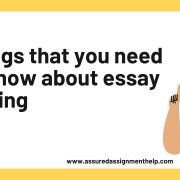Students will provide an individual report which covers both theoretical understandings of marketing communications supported by practical application of the theories including the development of an audit and recommendations. You are expected to demonstrate the use of marketing communications models and to support claims with academic references.
During seminars, learning activities will be provided for students to demonstrate their learning to date, these will include identifying and evaluating the key elements of the marketing communications audit, there will also be opportunities for one-to-one discussions regarding assessment progress.
The coursework is based on a marketing communications audit and recommendations on improving the marketing communications effectiveness of an organization through the creation of a marketing communications strategy and plan.
This will be a student-selected case study, requiring investigation, analysis, demonstration, and application of key concepts and the student’s recommendations to respond to changes in the macro-environment.
The format for this task is a report. Students are expected to adopt professional presentation, tone, and style.
Students should demonstrate the academic theory, use of marketing communications models, and evaluation, rather than description and anecdotal stories.
The reading list provides guidance on the relevant material.
Assessment brief
Mode: 100% Practical (Covers all Learning Outcomes)
The assessment is in one part, all coursework, as described here.
You are required to produce a professional 3,500-word report which comprises a marketing communications audit, a marketing communications strategy, and a marketing communications plan.
This task is worth (100%) of the total marks. This is a single professional report and there are three parts to this assessment, all must be completed and in this order:
1. Marketing communications Audit (40% weighting)
The marketing communications audit is a picture of where the organization is now. It is research work to inform future decisions and should be supported by academic underpinning.
- SWOT on the organization’s current use of marketing communications, and changes in the macro-environment.
- Evaluation (advantages and disadvantages) of at least one main competitor’s use of marketing communications.
- Identification of two key customer groups and development of personas.
- Customer journey flowchart or graphic.
The marketing communications audit is likely to include a range of marketing communications tools, frameworks and models.
2. Marketing Communications Strategy (30% weighting)
The marketing communications strategy is the next stage in the plan. It is based on the marketing communications audit.
This will include:
- TOWS matrix and commentary on the analysis.
- Recommended marketing communications strategy based on the audit and TOWS.
- Your SMART objectives.
The marketing communications strategy is likely to include a marketing communications model (e.g. RACE, Forrester’s 5Is, Lauterborn’s 4Cs, the Ten C’s of marketing or the 6Cs of customer motivation or acquire, convert, retain) and should be supported by academic underpinning.
3. Marketing Communications Plan (30% weighting)
The plan shows how the strategy will be achieved and is based on the strategy and objectives. The plan needs to be realistic and will reflect the organization’s size and capabilities.
This will include:
- Consideration of resources required, including staffing and a budget.
- An outline tactical plan, created in Excel or another spreadsheet with no more than 40 strategic activities, and inserted into the Word (or other document processing system) report.
Word count
- The total word count allowed is 3,500 words.
- Students must comply with the recommended word count, within a margin of -/+ 10%.
- You should balance the word count with the marks available.
The report can include:
- Screengrabs of websites.
- Relevant images.
- Clear headings.
What is included within the word count
- Headings.
- Body text (main content).
- All tables not specified below.
What is excluded from the word count
- Cover page.
- Contents sheet.
- Executive summary (no more than 1 page).
- SWOT table.
- TOWs Matrix.
- The budget table.
- The outline tactical plan.
- All references (textbooks and journals; quotes and referencing information) inside the body content.
- Bibliography.
- References.
The assignment should:
- Prove your theoretical understanding of issues in the macro-environment.
- Be appropriate for the target audience.
- Provide examples of best practice.
In completing the tasks, you need to demonstrate all of the following skills:
- Critical awareness and analysis of the ideas that you explore.
- Synthesis and presentation of key ideas.
- Evaluation of complex matters.
- Clear presentation of key concepts / ideas.
- Demonstration of academic research.
- Correct use of Harvard referencing.
- Professional presentation.
- Professional tone and style.
Presentation
- This is a professional report (not an essay) and should be written in the third person.
- The language should be professional and you should avoid abbreviations and ‘text speak’.
- Pages must be numbered for ease of reference.
- A minimum 11 point font should be used.
- Spacing should be 1.5 spacing throughout.
Please note that MAC users should save and submit their work as PDF documents to preserve original formatting.
Referencing requirements
Harvard Referencing (Cite Them Rite) is the method of referencing followed. This is absolutely vital. You must apply this system of referencing to (a) how you present references in the text and (b) how you present your references in the bibliography section.
N.B. The Harvard Cite Them Rite format of referencing means no footnotes!
Students are recommended to refer to the following book (available in Waterstones and copies are in the library) which may help your approach and understanding of Harvard referencing:
Pears, R., & Shields, G., (2013) Cite Them Right: The Essential Referencing Guide (9th edition) Basingstoke, Hants: Palgrave Macmillan. This is available in the University bookshop and also available here http://www.palgrave.com/page/detail/?sf1=id_product&st1=629574
Additionally, this YouTube video on Harvard referencing is very helpful and shows the differences between the different formats.
https://www.youtube.com/watch?v=NDgqqPvMn0U
Assessment Criteria
| Criteria (Weighting) | Marketing communications Audit (40%) | Marketing communications Strategy (30%) | Marketing communications Plan (40%) |
|---|---|---|---|
| 90-100% Excellent (First) |
The work includes marketing communications models, which are applied in an exceptional way and adapted where needed. The work is underpinned with a wide range of excellent and relevant academic references, showing depth of research and understanding. The work is presented to a professional standard and Harvard referencing is followed exactly. |
The work includes marketing communications models, which are applied in an exceptional way. The work is underpinned with a wide range of excellent and relevant academic references, showing depth of research and understanding. The work is presented to a professional standard and Harvard referencing is followed exactly. |
|
| 80-89% Excellent (First) |
The work includes marketing communications models, which are applied in an advanced way and adapted where needed. The work is underpinned with a wide range of excellent and relevant academic references, showing depth of research and understanding. The work is presented to a professional standard and Harvard referencing is followed exactly. |
The work includes marketing communications models, which are applied in an advanced way. The work is underpinned with a wide range of excellent and relevant academic references, showing depth of research and understanding. The work is presented to a professional standard and Harvard referencing is followed exactly. |
|
| 70-79% Excellent (First) |
The work includes marketing communications models, which are applied in an extremely good way and adapted where needed. The work is underpinned with a wide range of excellent and relevant academic references, showing depth of research and understanding. The work is presented to a professional standard and Harvard referencing is followed exactly. |
The work includes marketing communications models, which are applied in an extremely good way. The work is underpinned with a wide range of excellent and relevant academic references, showing depth of research and understanding. The work is presented to a professional standard and Harvard referencing is followed exactly. |
|
| 60-69% Very Good (2nd Div.1) |
The work includes marketing communications models, which are applied in a very good way. The work is underpinned with a range of very good and relevant academic references, showing very good evidence of research and understanding. The work is presented to a very good standard and Harvard referencing is followed mainly as required. |
The work includes at least two marketing communications models, which are applied in a very good way. The work is underpinned with a range of very good and relevant academic references, showing very good evidence of research and understanding. The work is presented to a very good standard and Harvard referencing is followed mainly as required. |
|
| 50-59% Good (2nd Div.2) |
The work includes some marketing communications models, which are applied in a good way. The work is underpinned good and relevant academic references, showing good evidence of research and understanding. The work is presented to a good standard and Harvard referencing is apparent and followed in places. |
The work includes at least one marketing communications model, which is applied in a good way. The work is underpinned with good and relevant academic references, showing good evidence of research and understanding. The work is presented to a good standard and Harvard referencing is apparent and followed in places. |
|
| 40-49% Satisfactory (3rd) |
The work includes a marketing communications model. The work is underpinned with satisfactory academic references, showing some research and understanding. The work is presented to a satisfactory standard and Harvard referencing is used in places. |
The work includes a marketing communications model. The work is underpinned with satisfactory academic references, showing some research and understanding. The work is presented to a satisfactory standard and Harvard referencing is used in places. |
|
| 35-39% (Fail) Unsatisfactory |
The work lacks academic references and contains inadequate online references, including, for example Wikipedia and Ehow. The work is poorly presented and Harvard referencing is not used. |
The work lacks academic references and contains inadequate online references, including, for example Wikipedia and Ehow. The work is poorly presented and Harvard referencing is not used. |
The work is poorly presented and Harvard referencing is not used. |
| 0-34% (Fail) Very Poor |
The work is badly presented and contains inadequate online or virtually no references. |
The work is badly presented and contains inadequate online or virtually no references. |
The work is badly presented. |
| 0-4% (Fail) Nothing of Merit | Nothing or hardly anything of merit submitted. When no work is submitted the NS notation will apply. | Nothing or hardly anything of merit submitted. When no work is submitted the NS notation will apply. | Nothing or hardly anything of merit submitted. When no work is submitted the NS notation will apply. |











